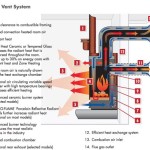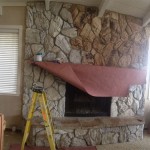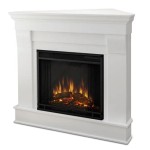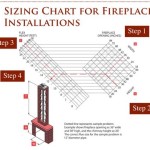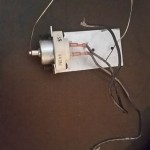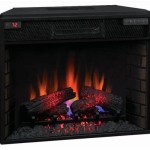On The Wall Fireplace: A Comprehensive Guide to Design, Installation, and Functionality
On the wall fireplaces, also known as wall-mounted fireplaces, have emerged as a popular design choice for modern homes, offering a blend of aesthetic appeal, space-saving convenience, and heating efficiency. These fireplaces are designed to be directly affixed to a wall surface, eliminating the need for a traditional hearth or chimney, and providing a focal point for any room. This type of fireplace offers a versatile option for homeowners looking to add warmth and ambiance without significant structural modifications.
The appeal of on the wall fireplaces lies in their diverse styles, technologies, and fuel options. Ranging from electric and gas models to ethanol and gel-fueled versions, these fireplaces cater to a wide array of preferences and installation possibilities. The decision to install an on the wall fireplace should be based on a careful consideration of factors such as heating requirements, aesthetic preferences, budget, and the structural capabilities of the wall on which it will be mounted.
The subsequent sections will delve into the key aspects of on the wall fireplaces, including the different types available, installation procedures, design considerations, and safety precautions. A thorough understanding of these factors is crucial for making an informed decision and ensuring a safe and aesthetically pleasing installation.
Types of On The Wall Fireplaces
The market offers a variety of on the wall fireplaces, each characterized by its fuel source, heating mechanism, and overall design. The most common types include electric, gas, ethanol, and gel fireplaces. Understanding the nuances of each type is paramount to selecting the most appropriate option for a specific application.
Electric Fireplaces: Electric fireplaces are among the most popular options due to their ease of installation and operation. They function by using electricity to generate heat, often simulating the appearance of flames through LED technology and projected images. Electric fireplaces are generally energy-efficient, especially when equipped with thermostats that allow for precise temperature control. They require no venting, making them suitable for virtually any room in a home. The installation typically involves mounting the unit to the wall and plugging it into a standard electrical outlet.
Electric fireplaces offer a range of features, including adjustable flame brightness, color options, and even remote control operation. Some models also include supplemental heat settings, allowing users to tailor the warmth output to their needs. While electric fireplaces may not provide the same level of realistic flames as gas or wood-burning options, they excel in terms of convenience, safety, and low maintenance.
Gas Fireplaces: Gas fireplaces offer a more authentic flame experience compared to electric models. They utilize either natural gas or propane to generate heat and produce realistic-looking flames. Installation of a gas fireplace requires a gas line connection and, in many cases, venting to the exterior of the home. This makes the installation process more complex and often necessitates professional assistance.
The heat output of gas fireplaces is generally higher than that of electric models, making them a more suitable option for heating larger spaces. Gas fireplaces also offer the advantage of functioning during power outages, provided they are equipped with a battery backup system. However, safety considerations are paramount when dealing with gas appliances, and regular maintenance, including inspection of gas lines and venting systems, is essential.
Ethanol Fireplaces: Ethanol fireplaces burn liquid ethanol fuel, producing real flames without the need for venting. They are considered a cleaner-burning option compared to gas or wood-burning fireplaces, as they produce minimal smoke, ash, or soot. Ethanol fireplaces are relatively easy to install, as they only require mounting the unit to the wall and filling the fuel reservoir.
The heat output of ethanol fireplaces is generally lower than that of gas fireplaces, making them better suited for providing ambiance rather than primary heating. Ethanol fuel can be purchased in various sizes and is readily available at many home improvement stores. However, it is important to follow safety precautions when handling and storing ethanol fuel, as it is flammable. Proper ventilation is also recommended, although not strictly required as with gas fireplaces.
Gel Fireplaces: Gel fireplaces are similar to ethanol fireplaces in that they burn a liquid fuel to produce real flames without the need for venting. Gel fuel typically comes in cans, which are placed directly into the fireplace unit and ignited. Gel fireplaces are relatively easy to install and operate, making them a convenient option for adding ambiance to a room.
The heat output of gel fireplaces is generally lower than that of gas or electric models. One potential drawback of gel fireplaces is that the gel fuel can sometimes produce a slight odor when burned. However, this odor is typically minimal and dissipates quickly. As with ethanol fireplaces, it is important to follow safety precautions when handling and storing gel fuel.
Installation Considerations
The installation of an on the wall fireplace requires careful planning and adherence to safety guidelines. The specific installation process will vary depending on the type of fireplace being installed. However, some general considerations apply to all types of on the wall fireplaces.
Wall Structure: Before installing an on the wall fireplace, it is crucial to assess the structural integrity of the wall. The wall must be capable of supporting the weight of the fireplace unit. For heavier fireplaces, it may be necessary to reinforce the wall by adding additional studs or using a specialized mounting bracket. It is also important to ensure that the wall is free of any wiring, plumbing, or other obstructions that could be damaged during installation.
Venting Requirements: Gas fireplaces require venting to the exterior of the home to exhaust combustion gases. The venting system must be properly installed and meet all applicable building codes. Electric, ethanol, and gel fireplaces do not require venting, making them easier to install in locations where venting is not feasible.
Electrical Connections: Electric fireplaces require a dedicated electrical circuit with sufficient amperage to handle the unit's power consumption. It is important to consult with a qualified electrician to ensure that the electrical system is adequate. Gas fireplaces may also require an electrical connection for the ignition system and other features.
Gas Line Connections: Gas fireplaces require a gas line connection to supply fuel to the unit. The gas line must be properly sized and installed by a qualified gas fitter. It is important to ensure that the gas line is leak-tested before and after installation to prevent gas leaks.
Safety Clearances: All on the wall fireplaces require specific safety clearances to combustible materials, such as furniture, curtains, and wall coverings. These clearances are typically specified in the manufacturer's instructions and must be strictly adhered to in order to prevent fire hazards. It is also important to ensure that the fireplace is installed in a location where it will not be obstructed by furniture or other objects.
Professional Installation: Installing a gas fireplace or any fireplace requiring gas or electrical connections is best left to qualified professionals. Improper installation can lead to serious safety hazards, including gas leaks, electrical shocks, and fires. A professional installer will have the expertise and equipment necessary to ensure a safe and compliant installation.
Design Integration and Aesthetic Considerations
On the wall fireplaces are more than just heating appliances; they are also design elements that can enhance the aesthetic appeal of a room. Integrating the fireplace seamlessly into the overall design scheme is crucial for creating a cohesive and visually pleasing space. This involves considering factors such as the style of the fireplace, the surrounding wall décor, and the overall color palette of the room.
Style and Finish: On the wall fireplaces are available in a wide range of styles, from sleek and modern to rustic and traditional. The style of the fireplace should complement the existing décor of the room. For example, a modern fireplace with a clean, minimalist design would be well-suited for a contemporary living room. Conversely, a more ornate fireplace with decorative accents would be a better fit for a traditional space.
The finish of the fireplace is another important design consideration. Common finishes include stainless steel, black, white, and various wood tones. The finish should coordinate with the other elements in the room, such as the furniture, flooring, and wall coverings.
Surrounding Wall Décor: The wall surrounding the fireplace provides an opportunity to create a focal point and enhance the overall aesthetic appeal of the space. Options include adding decorative stone or tile, installing a custom mantel, or creating a built-in surround. The wall décor should complement the style of the fireplace and the overall design of the room.
Color Palette: The color palette of the room should be carefully considered when selecting an on the wall fireplace. The fireplace should complement the existing colors in the room and contribute to a cohesive and harmonious design. For example, a fireplace with a neutral finish can be paired with a variety of color schemes. A fireplace with a bold color can be used to add a pop of visual interest to a neutral room.
Size and Proportion: The size of the fireplace should be proportionate to the size of the room. A large fireplace in a small room can overwhelm the space, while a small fireplace in a large room may not have the desired impact. It is important to choose a fireplace that is appropriately sized for the dimensions of the room.
Lighting: Lighting plays a crucial role in highlighting the fireplace and creating ambiance. Recessed lighting, sconces, or spotlights can be used to accentuate the fireplace and draw attention to its features. The lighting should be carefully positioned to avoid glare and create a warm and inviting atmosphere.

Recessed Or Wall Mount Electric Fireplace Installations Explained Touchstone Home S Inc

ᑕ❶ᑐ Wall Mounted Electric Fireplace Basic Guide 2024

Living Room Fireplace Home Decor With

Wall Mounted Electric Fires Archives Flare Collection

Modern Flames Lpm 4416 Wmc Landscape Pro Multi 44 Inch Three Sided Electric Fireplace With Wall

The Ins And Outs Of Wall Mounted Fireplaces 5 Things To Consider Stylish

Flamerite Atlas 1000 Wall Mounted Electric Fireplace Suite Flames Co

Benefits Of A Media Wall Fireplace

What Types Of Fires Can You Use In A Media Wall Direct Fireplaces

Advance Panoramic 53 Inch 3 Sided Hd Media Wall Electric Fire Insert


